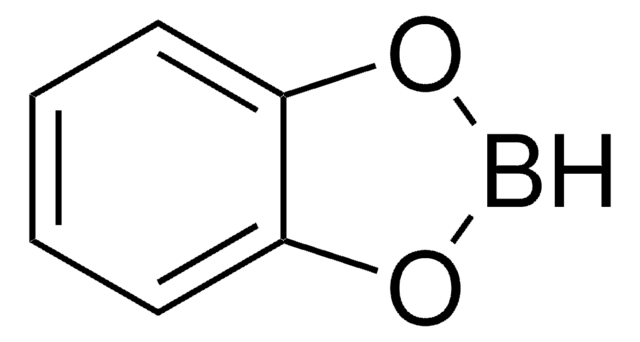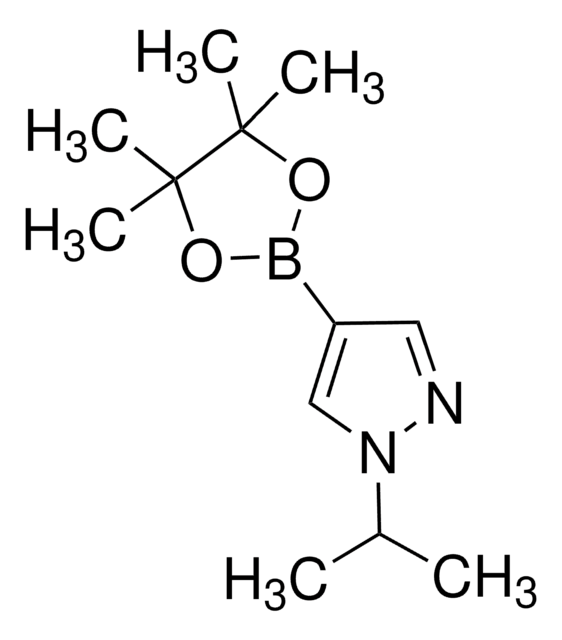642606
trans-3-Phenyl-1-propen-1-yl-Boronsäure
≥95%
Synonym(e):
trans-3-phenylpropen-1-yl-boronic acid
About This Item
Empfohlene Produkte
Assay
≥95%
Form
solid
SMILES String
[H]\C(Cc1ccccc1)=C(\[H])B(O)O
InChI
1S/C9H11BO2/c11-10(12)8-4-7-9-5-2-1-3-6-9/h1-6,8,11-12H,7H2/b8-4+
InChIKey
GMGWFDHLFMBIDS-XBXARRHUSA-N
Anwendung
- Carbonylative arylation of allenols
- Oxidative cross-coupling with (trifluoromethyl)trimethylsilane
- Suzuki-Miyaura coupling reactions
- three-component reductive coupling with alkynes
- Enantioselective conjugation to vinyl 2-pyridylsulfones
Sonstige Hinweise
Lagerklassenschlüssel
11 - Combustible Solids
WGK
WGK 3
Flammpunkt (°F)
Not applicable
Flammpunkt (°C)
Not applicable
Persönliche Schutzausrüstung
Eyeshields, Gloves, type N95 (US)
Analysenzertifikate (COA)
Suchen Sie nach Analysenzertifikate (COA), indem Sie die Lot-/Chargennummer des Produkts eingeben. Lot- und Chargennummern sind auf dem Produktetikett hinter den Wörtern ‘Lot’ oder ‘Batch’ (Lot oder Charge) zu finden.
Besitzen Sie dieses Produkt bereits?
In der Dokumentenbibliothek finden Sie die Dokumentation zu den Produkten, die Sie kürzlich erworben haben.
Unser Team von Wissenschaftlern verfügt über Erfahrung in allen Forschungsbereichen einschließlich Life Science, Materialwissenschaften, chemischer Synthese, Chromatographie, Analytik und vielen mehr..
Setzen Sie sich mit dem technischen Dienst in Verbindung.

![trans-2-[4-(Trifluormethyl)phenyl]vinylborsäure ≥95%](/deepweb/assets/sigmaaldrich/product/structures/423/840/62b8853e-a529-4519-8105-3c6197c3ef2d/640/62b8853e-a529-4519-8105-3c6197c3ef2d.png)





